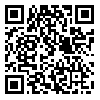Background: Mycotoxins are a group of structurally diverse substances produced by a wide range of moulds. These fungal secondary metabolites, whose presence in feed is unavoidable, can impose hazards to human and animal health. Continuous concern about potential effects of mycotoxins in the human diet has led to an increasing interest in researches about fungi and mycotoxin production. The aim of this work was to assess fungal contamination of feed material manufactured in Iran with emphasis on its importance in safety of animal origin foods.
Methods: Samples included 16 poultry and 15 aquatic feed which collected from 4 and 3 factories, respectively in Markazi province, Iran, in 2012. Then, standard mould count procedure was carried out to determine fungal contamination levels in the samples. SPSS (version 16) software was applied to statistical analysis.
Results: According to the results, 6.7% of aquatic and 31.3% of poultry feed samples had fungal contamination. The mean fungal contamination level of poultry feed and aquatic feed samples were 6.4×104±1.12×105 CFU/g and 1.18×103±2.77×103 CFU/g, respectively.
Conclusion: This study showed a need for control of fungal contamination in aquatic and poultry feed in Iran. The condition of poultry feed is more problematic than that of aquatic feed, indicating a need to more local work to have least fungal contamination.
Received: 14/03/26 | Accepted: 14/07/02 | Published: 14/09/15
| Rights and permissions | |
 |
This work is licensed under a Creative Commons Attribution-NonCommercial 4.0 International License. |


